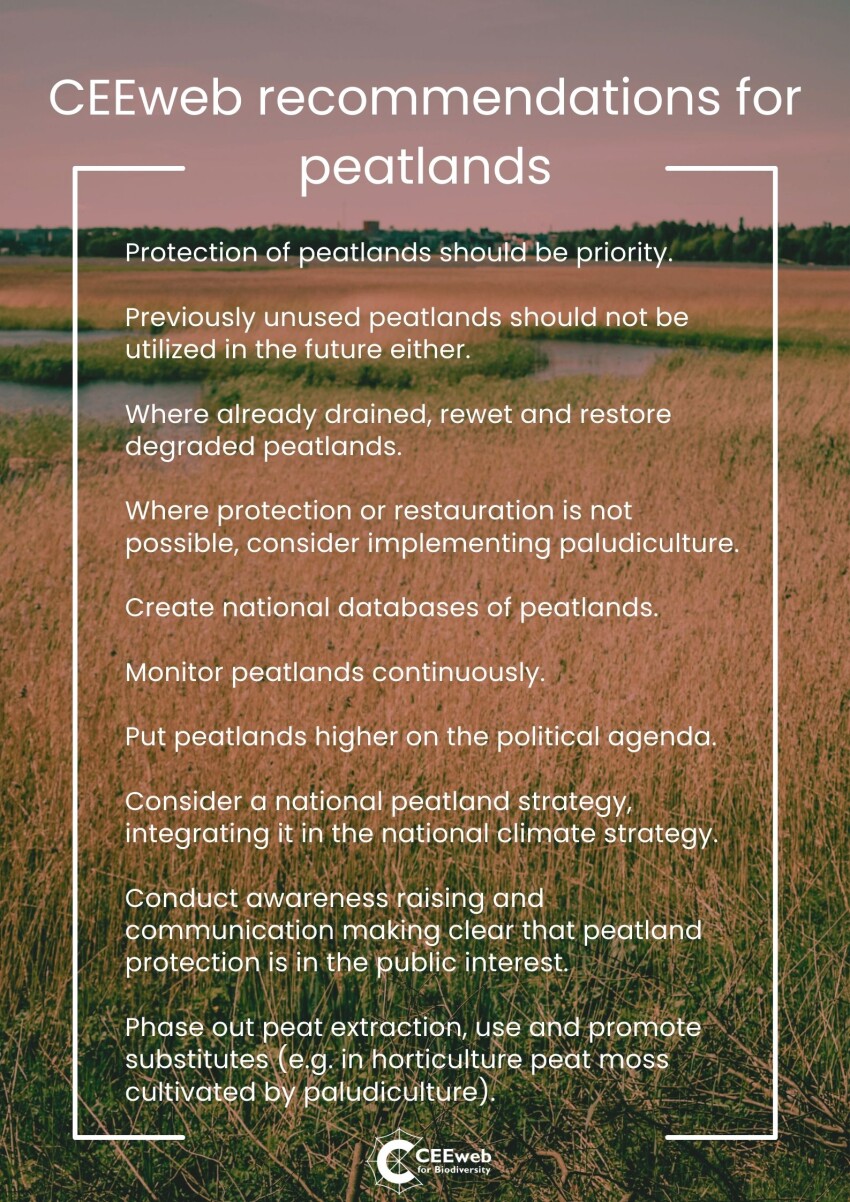
CEEweb’s summary for policy and decision-making on integrating peatlands into climate policies in CEE countries is out.
The summary document was written to enhance understanding peatlands’ significance and support Central and Eastern European (CEE) policy- and decision makers to integrate peatland protection and restoration as effective measures for climate change adaptation and mitigation. With 10 recommendations at the end we attempt to improve peatlands’ place in the Central and Eastern European policy field.
Peatlands, often overshadowed by forests in climate discussions, are powerful allies in the fight against climate change. These unique ecosystems, predominantly found in wetland areas, accumulate layers of organic peat over centuries. Despite covering only 3% of the global land area, peatlands store twice as much carbon as all the world’s forests combined, making them vital carbon reservoirs.
However, when degraded through drainage for agriculture, peat extraction, or other uses, these landscapes become significant sources of greenhouse gas emissions, releasing stored carbon at a rate 10 times faster than their natural accumulation. Protecting and restoring peatlands, especially in the Central and Eastern European (CEE) region, where they are often overlooked, is critical to achieving climate goals outlined in the European Green Deal and the Paris Agreement.
Restoration efforts such as rewetting can immediately reduce emissions, while innovative practices like paludiculture allow sustainable use of rewetted peatlands, producing crops like cranberries and peat moss without further damage. Additionally, crafting national peatland strategies and integrating them into broader climate policies can ensure their preservation and rehabilitation.
It is essential to prioritize peatland protection in the CEE region, raise public awareness, and to integrate peatland protection into climate strategies. By doing so, peatlands can remain a cornerstone of climate resilience.
CEEweb’s 10 recommendations for CEE decision-makers for integrating peatland protection and restoration as effective measures for climate change adaptation and mitigation

